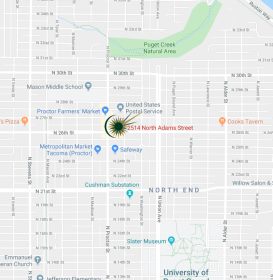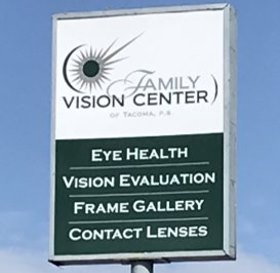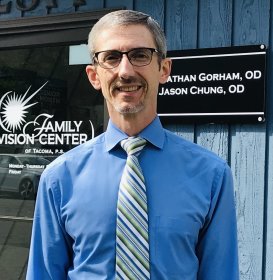Children's Vision

One of the first obvious features of embryonic development is the optic pits, which appear during the third week of development, when a growing child is roughly 2.6 millimeters in length. The eyes continue to grow up with the rest of the brain - the eyes could be thought of as a light-sensitive part of it. The human central nervous system is extremely visually-oriented structurally and functionally: of the twelve nerves which go directly from the brain to supply structures in the head, five of them are directly involved with the functioning of vision; 42% of the nerve fibers from the five senses are vision fibers; and upwards of 85% of all the information our brains process involves vision. There have been human development scientists who were even known for saying, in fact, that ‘vision IS development’. In the opinion of this writer, this is certainly reasonable to say given the evidence.
The vast majority of vision development happens in our early years, along with other major developmental milestones. But at the same time that major milestones in vision development are taking place, refractive error (nearsightedness, farsightedness, astigmatism) often manifests itself. Put together, this can be a difficult situation for many children, one that can make school frustrating and learning difficult. A very common age for first noticing this situation is about second or third grade, when children are taken from the phase of ‘learning how to read’ to that of ‘reading to learn’. Often times, children don’t have a good concept of how they are supposed to see, so they don’t complain, and their situation goes on unchecked unless a professional evaluation finds it.
According to research, school and physician vision screenings miss approximately one third of vision problems that may interrupt learning, usually having to do with two-eyed coordination and near vision. (School vision screenings are not the same as eye exams!) Having a comprehensive eye examination which includes a binocular analysis is needed in order to keep a child from losing learning opportunities at school. And this is not to mention the detailed evaluation of their eye health, which is not part of a school screening. The following discussions expand on the things we are most concerned about when we examine children in our office.
Accommodative Insufficiency and Convergence Excess
These are very disruptive vision problems that affect eye coordination up close. In one study, reported by the College of Optometrists in Vision Development (COVD), of children between the ages of 9 and 13, over one in 8 were found to be moderately or severely affected by Convergence Insufficiency. It was also estimated that as many as 25% of children of school age had a vision-related learning problem. So vision problems which affect learning are unfortunately common, and it takes vision testing that examines this to find them. Ideally speaking, the eyes are at rest and are pointing parallel when viewing at a distance of 20 feet or more. It is up close that the eyes have to add more focusing power and realign themselves. If the point at which the eyes are focusing and the point at which they have pointed are not together well, blur, strain, headaches, and double vision can happen. This can understandably make school difficult Lenses can be used to adjust the focusing point is so that it meets together with the place where the eyes are pointed, and this gives great relief. The difficulty of using near prescriptions, however, is that they make distance vision blurry. This is solved by using multifocal lenses, preferably bifocals. (See article ‘Eyeglasses’). So, bifocals are for anyone with near vision problems, not just those of us that are over 40!
Strabismus and Amblyopia
These are medical terms used to describe two conditions that often happen together, and happen most commonly before the age of three. Strabismus is when the vision from each eye is used alternately instead of together. This almost always results in one eye pointing in a different direction than the other, and can happen because of problems with the eye’s six muscles, the nerves that bring signals to them, or the control centers in the brain that coordinate the muscles so that the eyes point at the same place. The misalignment can be constant, or it can happen just when the person is tired, and one eye may point in any direction compared to the other. The terms we use to describe it are: esotropia when one eye turns inward, extropia if it turns outward, hypertropia if it points upward, and hypotropia when it points downward. Other terms we use to describe it include ‘unilateral’ if it affects only one eye, or ‘alternating’ if it happens to either eye, and whether the misalignment happens constantly or intermittently. Strabismus causes poor depth perception, and usually results in decreased vision in one eye because double vision is so distressing to the brain that it will ignore (suppress) the vision from one eye just to avoid it. This suppression can become permanent, which is called Amblyopia.
Amblyopia is when the vision from one eye is suppressed by the brain because it finds it easier to do this than to try to make sense of the two images together. This can be because the images don’t correspond because of the ‘double vision’ from strabismus (strabismic amblyopia), but can also happen if the eyes are too optically different from each other (refractive amblyopia). Treatment for Amblyopia needs to happen at as early a stage in vision development as possible because it can become permanent if left after ten years of age.
Usually these conditions will show themselves in children by age three, but can happen later. If a child has an eye misalignment problem after four months of age, they should examined. Sometimes very small children will only appear to have a misalignment because they temporarily have extra skin that covers the inside corners of their eyes (epicanthal folds), or the bridge of their nose is wide, but this should be determined by an eye doctor just in case treatment is necessary.
Treatment for Amblyopia depends on which thing it is from: if it is from an extreme difference in lens prescriptions, contact lenses are best; if it is from strabismus, lenses can be used, or prisms, vision therapy, or eye muscle surgery—or a combination of these. With early treatment, the chances of a good result are best, children don’t just ‘grow out of it’. Strabismus can run in families, can happen from large amounts of farsightedness, or from medical conditions such as stroke, Down syndrome or cerebral palsy.
Loss of Vision in Children
A spike in eye pressure is the most common cause of vision loss in children, usually from trauma, but also from surgery or drugs. The main concern is ‘high-risk’ sports, which are those with small projectiles like baseball, lacrosse, racquetball and hockey, but also those where finger pokes are common, like basketball, football and soccer. Baseball is the most common cause of eye injuries for children ages 5-14, and basketball is the leading cause of injury for 15-24 year olds. Protective measures are the best medicine of all, but in the event of an injury, it is always best to be examined to ensure that things like bleeding inside the eye, inflammation, or rupturing of the layers of the retina aren’t happening—things which may not give significant symptoms.
Retinoblastoma is the tenth most common cancer in children, occurring in 1 out of every 20,000. It is one of the most feared cancers because of how fast it can grow. It comes in two forms: hereditary and sporadic. The fact that the sporadic (random) form is the most common causes great concern for those of us in health care: it is more often the case that this fatal tumor randomly happens to children without a family history to help identify those at risk. The most recognizable sign for this cancer is a white pupil because this tumor has a bright white appearance and fills the eye. Pediatricians and eye doctors screen for this, adding yet another reason to have children regularly examined.
Though every effort has been made to be accurate, all articles contained within this website are for strictly informational purposes, and not to be used as a sole source for healthcare training and instruction. Neither does Family Vision Center of Tacoma, P.S., assume responsibility for actions undertaken by someone using information presented on this website to make healthcare decisions.
Glowing Reviews
I just want to thank everyone for being so kind and helpful. It’s the first time I have glasses I actually like thanks to the girls at the desk assisting me in my search for frames. You were all wonderful and I
Whitney, Tacoma
Dr Gorham and staff were consistently friendly, warm, informative and professional. I’m so glad you are in my neighborhood!
Barbara, Tacoma
Dr Gorham is great! I think he gave me the best examination I’ve ever received, certainly the most accurate prescription.
Marita, Tacoma
Terrific customer service, warm and caring. Beyond the above mentioned kudos, the technical knowledge of products was A+. Will recommend your office!
Kathy, Tacoma
I was very pleased with the way I was treated, and how everything was explained to me. I’m looking forward to my next visit! (And I’m enjoying my headache-free days at school!) Thanks again!
Jessica, Tacoma





